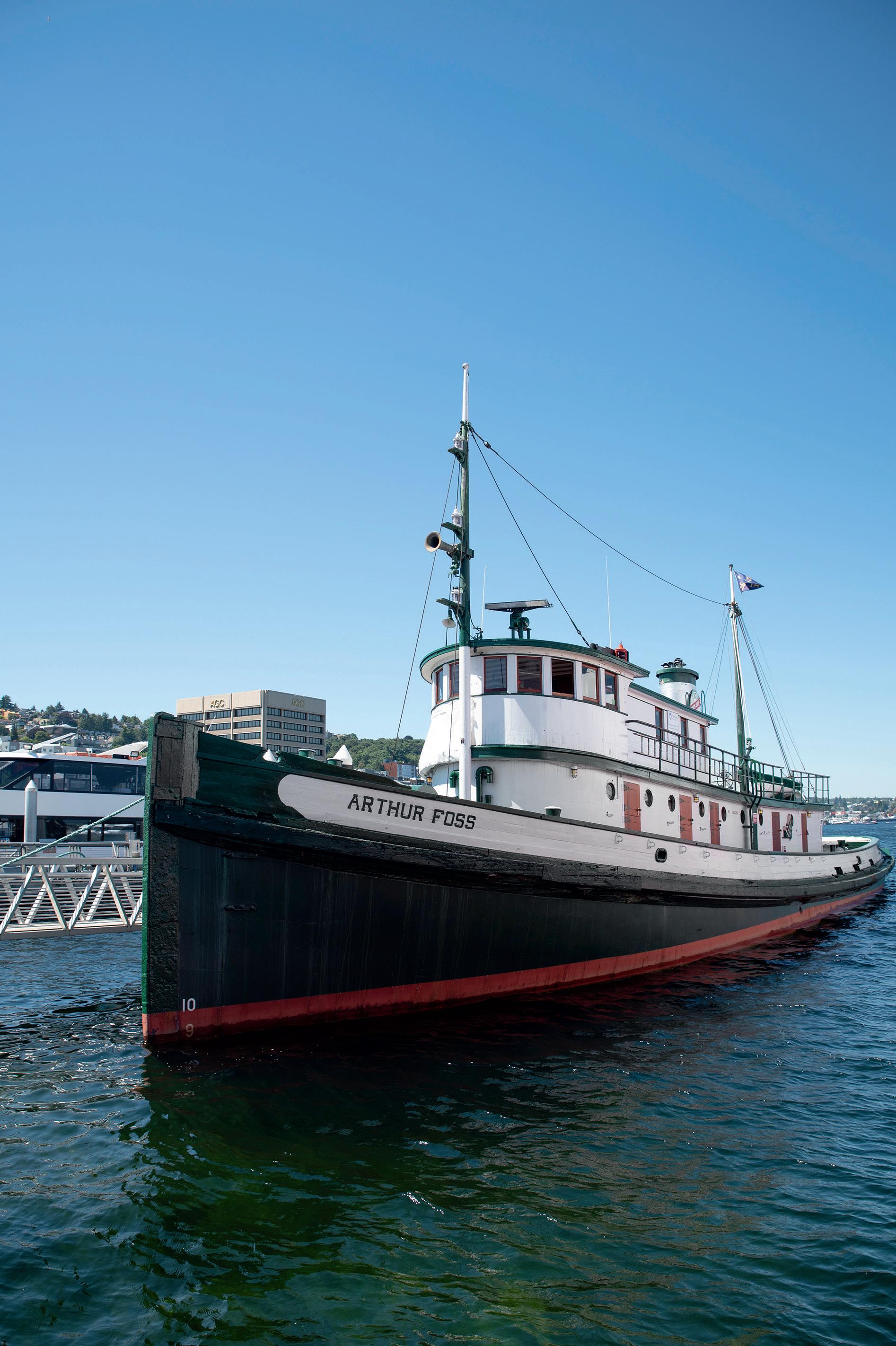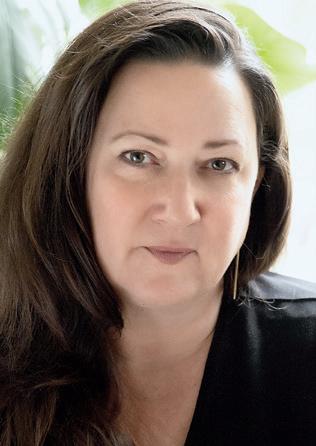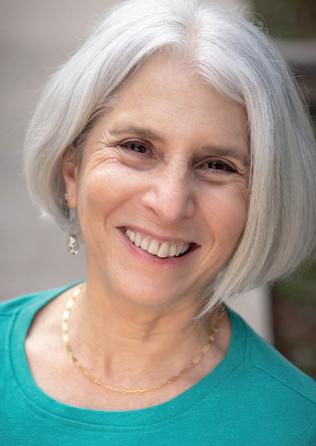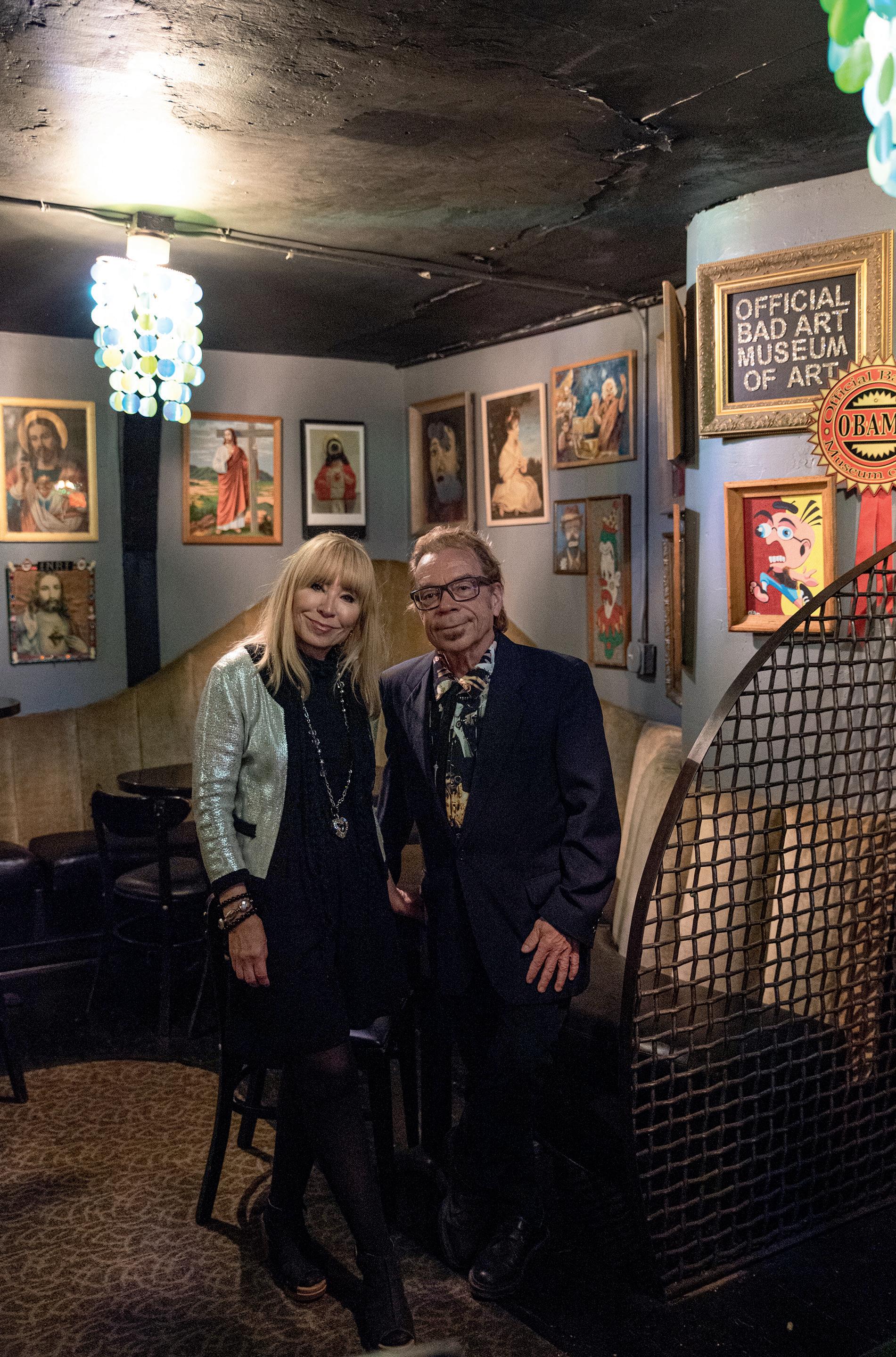

Acacia Memorial Park
Grand mausoleum with oodles of stained glass
Acacia Memorial Park, just north of Seattle in Lake Forest Park, was founded in 1926 by the Greater Seattle Masonic Lodge. Freemasons consider the acacia tree to be symbolic of the promise of rebirth and eternity, so it was easy to name the cemetery after the tree. Run ning the cemetery proved more complicated. So just one year later, the lodge sold the business to the Burnaby family, who kept watch until 1999.
Today, more than 70,000 people are interred in the 63-acre ceme tery dotted with sequoias, spruce, century-old redwoods, and enough tree varieties to make the site a field trip destination for college hor ticultural classes. Feel free to walk the carefully manicured grounds and contemplate the meaning of life and, of course, death. Be on the lookout for gravesites of politicians, sports figures, and other notable people, such as Microsoft cofounder Paul Allen, long-time Wash ington senator Warren Magnuson, and noted test-pilot Edmund “Eddie” Allen.
Do not leave without venturing inside the 3.5-acre Acacia mau soleum. At the entrance, a glass exhibit case displays a hand-carved replica of the Taj Mahal, the mausoleum Mughal emperor Shah Jahan built for his favorite wife in the mid-1600s. It is there, the staff explains, because many people do not understand the mauso leum concept, and the model creates the “aha” connection.
The Acacia mausoleum is no Taj Mahal, but it is grand and sur prising. Down corridors with garden-inspired names such as Lilac, Rose, and Azalea are 7,708 crypts for caskets and 9,500 niches hold ing decorative urns with cremated remains. Natural light illuminates the entire building through leaded-glass skylights and 29 massive, stained-glass windows decorated with geometric designs, flowers, and religious images. A second, newer mausoleum nearby features a center atrium with a Japanese garden, a waterfall, and reflecting pools.
Address 14951 Bothell Way NE, Seattle, WA 98155, +1 (206) 362-5525, www.acaciafuneralhome.com | Getting there Bus 522, 65 to Bothell Way NE & NE 153rd Street | Hours Daily dawn dusk, mausoleum 8am 4pm | Tip A few miles northwest, Shoreline Historical Museum digs into the history of the Forest Park neighborhood (18501 Linden Avenue North, www.shorelinehistoricalmuseum.org).

Aerocar
This cute car could fly above traffic
The late Moulton (Molt) Taylor, of Longview, Washington was an inventor, tinkerer, engineer, former navy pilot, and world-class dreamer. He had designed some innovative small airplanes, but in the late 1940s he became obsessed with building a car that could fly. Others had tried and failed or written off the idea as science fiction. But Taylor was one who succeeded.
His invention, which he dubbed the Aerocar, was a tiny, two-pas senger vehicle that had a small engine, rear propellers, and a set of wings that could be towed behind the car and easily attached to trans form the car into a small airplane. The Civil Aeronautics Adminis tration (now the Federal Aviation Administration, or FAA) certified the Aerocar as airworthy. But despite interest from the Ford Motor Company, the Aerocar never went into full production. Still, people did get to see it fly. Taylor made seven prototypes and production models of the Aerocar. In an early newsreel report about the inven tion, the announcer exclaimed that with the Aerocar drivers would be able to “change a 60-mile-per-hour, traffic-hampered buggy into a high-flyer in the unlimited highways of the sky.”
Around 1960, a Portland, Oregon radio station used an Aerocar for eye-catching traffic reporting. And in 1962 actor Bob Cummings flew his own Aerocar in his TV sitcom, The Bob Cummings Show, in which he played a photographer and amateur detective with roman tic misadventures. In real life, Cummings gave Aerocar rides to his Hollywood dates, among them, it is said, Marilyn Monroe.
Today, the red Aerocar III can be spotted in the Great Gallery at Seattle’s Museum of Flight. But you’ll have to search for it. The museum’s 3-million-cubic-foot, six-story glass and steel main exhibit hall is home to almost 40 full-size historic aircraft. The tiny Aerocar designed for quick getaways is tucked under the wing of one of the larger planes.

Arctic Club Hotel
A Gold Rush club left this gem behind
In the early 1900s, some of the lucky prospectors who struck it rich in the Klondike and Alaska gold rushes created an elite Seattle social group known as the Arctic Club. Their first downtown headquarters was in what is now the Morrison Hotel. But in 1916 the club hired architect A. Warren Gould to design something grander where they could socialize, drink, and make deals.
The Beaux-Arts style Arctic Club building Gould created was arctic-inspired and rich in amenities. Its main corridors were clad in fine Alaskan marble. Twenty-seven tusked, terracotta walrus heads dotted the third-floor exterior. And the terracotta panels covering the building’s steel-reinforced concrete frame weren’t just off-white, they were the first in Seattle to feature colors – teal blue and ochre. Inside, there was a ladies’ lounge, billiard and card rooms, a barber shop, a bowling alley, meeting and sleeping rooms, and a rooftop garden.
Several restorations later, the polar bear over the main entrance is long gone, but the walrus heads remain, as do the framed photos of the men who were club members. The wooden lobby bar was sto len, the story goes, in the dead of night from the previous location and nonchalantly reinstalled here overnight. The 3,600-square-foot, formal dining room is still here too. Known today as the Northern Lights Dome Room, it dazzles with a grand chandelier, carved wood support structures, and a circular wood frieze dense with hand-carved fruits and vegetables. Above it all is a stunning, leaded glass dome ceiling lit to evoke the Northern Lights.
The building may also be haunted. In 1936, Congressman Marion Zioncheck jumped to his death from his office on the 5th floor, land ing directly in front of the car in which his wife was sitting. “I haven’t seen his ghost,” says Andy Spaulding, the hotel’s assistant manager, “but he might visit guests staying in what are now rooms 509, 511, or 513.”
see the
a
www.lottehotel.com/seattle-hotel/en.html).

Art at the Airport
SEA’s museum-quality collection
Airports are the first and last places most people see when visiting a city, and Seattle-Tacoma International Airport (SEA) goes above and beyond to make a good impression.
The city’s vibrant music scene is represented with live concerts on multiple stages every day and a Sub Pop Record Shop filled with CDs, vinyl, and merch. Outposts of popular local restaurants and bars abound. And SEA holds a world record for having the longest structure over an active taxiway: a 780-foot-long pedestrian walkway that is 85 feet above the ground.
And then there is the art. In the late 1960s, SEA was the first air port to set aside money from capital improvement projects to buy art by well-known and emerging international and regional artists. “The early acquisitions were quite brilliant,” says SEA senior art manager and curator Tommy Gregory. “Today we would not have the ability to collect works like Night Flight #1 by Louise Nevelson (Confer ence Center, mezzanine level), Star Quarters by Robert Rauschen berg (Concourse C, near higher number gates), and York Factory A by Frank Stella (Terminal A, by A6).” The collection is worth mil lions, and strolling SEA is like visiting an eclectic museum with artwork not just on the walls, but on the floors, in bathrooms and nursing rooms, on columns and windows, and even embedded in drinking fountains.
Do not miss the art in the baggage claim area, which includes Norman Andersen’s Rainmaker’s Baggage, a kinetic kabob of vintage suitcases at Carousel 8 that surprises passengers by spinning when baggage arrives, and Eyes on the World by Richard C. Elliott, near Carousel 15. More than 6 feet high and 20 feet long, Elliott’s color ful light installation is made with more than 4,000 industrial grade, acrylic safety reflectors in a pattern inspired by the corn husk baskets made by Plateau Indians along the Columbia River.

The Arthur Foss
The oldest wooden tugboat was a movie star
A fleet of historic vessels owned by the non-profit Northwest Sea port Maritime Heritage Center and moored at Seattle’s Lake Union Park offers a deep dive into the maritime heritage of the Northwest Coast and the Puget Sound.
You’ll see the 129-foot-long Lightship No. 83, known as Swiftsure, which launched in 1904 and served as a floating lighthouse in sev eral ports. In addition to being the oldest lightship in the country, Swiftsure is the only one with its original steam engine. The fish ing vessel Tordenskjold dates to 1911 and was built in Seattle’s Bal lard neighborhood. Named for Norwegian / Danish naval hero Peter Tordenskjold, this sturdy, 75-foot halibut schooner is made from fir planks and old growth timber. It fished the North Pacific and Bering Sea for 100 years.
To many, the real star here is the 120-foot-long Arthur Foss. It is the country’s oldest wooden tugboat and the oldest floating vessel in the Pacific Northwest. Built in Portland, OR in 1889, the year Wash ington became a state, and launched as the Wallowa, the sturdy tug’s first job was towing sailing ships across the treacherous bar at the mouth of the Columbia River. During the Klondike Gold Rush (see ch. 56), the tug towed ships and barges as far as Nome, Alaska. Pur chased by Seattle’s Foss Maritime Company and renamed the Arthur Foss after the eldest son of company founders Thea and Andrew Foss, the tug was tapped for a starring role as the Narcissus in the hit 1933 film Tugboat Annie. That film and several others, including one with Ronald Reagan, were based on a series of short stories about a tough-talking female tug skipper inspired by Seattle’s waterfront cul ture and the Foss family saga. Updated with a diesel engine to replace its steam one, the powerful Arthur Foss went on to have many more adventures, including military service during World War II, before retiring in 1968.
Address Historic Ships Wharf, Lake Union Park, 860 Terry Avenue N, Seattle, WA 98109, +1 (206) 447-9800, www.nwseaport.org, info@nwseaport.org | Getting there Bus C, 40, 64 to Westlake Avenue N & Mercer Street; South Lake Union Streetcar to Lake Union Park | Hours Unrestricted, see website for tour schedule | Tip The 1909 historic cruising houseboat M / V Lotus nearby hosts dockside tours, afternoon tea, and overnight stays (1010 Valley Street, www.mvlotus.org).

Ballard Locks
Engineering marvel, fish ladder, botanical garden
Each year, more than 70,000 vessels, from kayaks, commercial fish ing boats and yachts to loaded barges with tugboat escorts, pass back and forth through the Hiram M. Chittenden Locks that connect the fresh waters of Lake Washington, Lake Union, and Salmon Bay with the salty waters of Puget Sound. Built by the Army Corps of Engineers and opened in 1917, the two locks and associated facili ties include a spillway and gates to help control the different water levels on each side.
The “show” at the Ballard Locks, as this engineering marvel is commonly known, is entertaining and educational. Boats enter the locks, a gate closes behind them, and a mechanism raises or lowers the water – sometimes as much as 26 feet – to match the level on the other side. All the while preventing sea water from Puget Sound from mixing with the fresh water. Then the opposite gate opens, and the boats continue on their way. This process goes on all day.
But there is more to the show. Between June and mid-October, several species of salmon on their journey from the ocean to spawning grounds upriver pass through the area via a fish ladder that includes viewing windows and interpretive exhibits. On sunny days, arrive at midday, when it is often possible to look down into the water and see a large number of fish waiting to enter the ladder.
The hidden treasure at the Ballard Locks is the seven-acre Carl S. English Jr. Botanical Garden, named for the man who spent 40 years transforming the grounds into an English estate garden with more than 500 species and 1,500 varieties of trees and plants, including many rare specimens.
Learn about the history and workings of the locks, the fish ladder, and the garden in the visitor center and museum (both free). Or take a free public tour from March through November. You can go through the locks yourself on an Argosy Cruises boat tour.
Address 3015 NW 54th Street, Seattle, WA 98107, +1 (206) 783-7059, www.ballardlocks.com | Getting there Bus 44 to NW 54th Street & NW 30th Avenue | Hours Daily 7am 9pm | Tip The casual, no-frills Lockspot Café at the Ballard Locks entrance has been serving fish & chips, fish sandwiches, and steak and seafood staples from this spot for more than 90 years (3005 NW Locks Place, www.thelockspotcafe.com).

Black Coffee Northwest
Blending with the community over a Melanin Mocha
Darnesha and Erwin Weary had their first date in a coffee shop more than 20 years ago. Today, they blend a shared love of coffee, their professional experiences, and a commitment to community organizing and community service with their Shoreline coffee shop that doubles as a neighborhood center. “We saw a need for rec reation for Black and brown youth and started putting together events,” says Darnesha. “And that led us to opening the coffee shop initially because we needed a space to do that work.” They also wanted their coffee shop to be a place where people could meet and talk about tough issues and events going on in the city and around the country.
The couple powered through pandemic restrictions, an arson attack a day before the shop’s grand opening, and repeated racist vandalism. Nevertheless, they have created a comfortable and cul turally inclusive coffeeshop with live edge wood tables, locally made art, and positive messages of social justice. Community-oriented programs include live music, food trucks, after-school homework help, and a Saturday craft marketplace, as well as a free food pantry. They also host an internship program that teaches young people not only marketable barista skills, but also a wide range of financial, business, and other important life and work skills that will be useful throughout their lives.
The drink menu at Black Coffee Northwest is designed to be both entertaining and a community engagement tool. Many of the drinks have alternate names intended to be conversation starters. Here, an Americano coffee is also an Africano; a Cappuccino is also a Blackaccino; and a Chocolate Mocha doubles as a Melanin Mocha. Need a bit less caffeine? Try a Chai Tea Latte by asking for a Supa’ Fly Chai. Want something much stronger? Order a doppio espresso by letting the barista know you want to Espress Yo’ Self.
Address 16743 Aurora Avenue N, Shoreline, WA 98133, +1 (206) 316-8366, www.blackcoffeenw.com, info@blackcoffeenw.com | Getting there Bus E to Aurora Avenue N & N 170th Street | Hours Mon Sat 6:30am 4pm | Tip Queen Bee (“You Dine, We Donate”) is another Seattle café with a mission. 100% of café profits go to local charities (2200 E Madison Street, Suite B, www.queenbeecafe.com).

Boeing Field
Measure the history and wonder of flight
In the late 1940s, before Seattle-Tacoma International Airport (SEA) was built, commercial passenger service was handled by King County International Airport (BFI), or Boeing Field.
Named for William E. Boeing, whose company built and tested early aircraft nearby, Boeing Field remains one of the country’s bus iest general aviation airports, serving cargo flights, private aircraft, and one small commercial carrier, Kenmore Air. Downtown Seattle is just four miles away, so celebrities, dignitaries, and sports teams like to touch down here as well.
The small terminal building, first opened in 1930, has an outdoor viewing area popular with plane spotters, and a grassy area opposite the entrance with several historic plaques. Inside, photo exhibits and a building-wide art collection celebrate the region’s ties to aviation history and to the wonder of flight.
Two impressive but easy-to-miss art pieces created for the build ing’s 2003 restoration are right at the front door. The terminal’s dark blue terrazzo floor sparkles with stars and other astronomical objects that offer a quick journey from North America to the Moon (at the ticket counter) in Paul Marioni and Ann Troutner’s piece, Our Place in Space. And be sure to look up. The building’s entryway is flanked by Brad Miller’s piece, 30,000 Feet, which uses 30,000 onefoot, metal-edged wooden rulers to represent the common cruising altitude of a commercial flight. Two giant arrows made of rulers point to the ceiling and to a pair of illuminated photographs. One depicts the clouds and sky a commercial flyer might see looking out the window of an airplane flying at 30,000 feet. And, Miller explains, because most flights people take to and from this airport are on small planes, the second photograph is of an evergreen forest as it would look from the window of an aircraft flying at a much lower altitude.
Address 7277 Perimeter Road S, Seattle, WA 98108, +1 (206) 296-7380, www.kingcounty.gov/services/airport.aspx, kciacustsvc@kingcounty.gov | Getting there I-5 S to Albro / Swift Exit 161 | Hours Daily 8am 5pm | Tip The red barn that was the historic birthplace of the Boeing Airplane Company once sat along the Duwamish River, not far from here. The barn is now in the Museum of Flight, across the airfield from the terminal building (9404 E Marginal Way S, www.museumofflight.org).

Boeing’s First Flight
The B&W Bluebill flew from here in 1916
The Roanoke Street Mini Park is one of almost 150 “street ends” in Seattle that sometimes look like private spaces but are really pub lic rights-of-way that provide access to local shorelines. This tiny, well-tended wedge of a green space is one of the gems. Tucked into a neighborhood of waterfront homes and condos, the mini park has two shaded benches and a pleasing peekaboo view of houseboats, seaplanes, and watercraft on Lake Union.
Easy to miss on the low wall along the park’s stone walkway is a bronze plaque noting, “From this site, Boeing launched its first air plane, the B&W, in 1916.” The plane was a two-wing floatplane built by William E. Boeing, then a timber executive, avid yachtsman, and budding aviation enthusiast, with his friend and fellow flying fan, U.S. Naval officer Conrad Westervelt. (Thus the “B&W” in the name.) Both men had ridden in Martin seaplanes (Boeing owned one), and together they set out to make an airplane that was better.
Their first plane, the B&W Bluebill (Model 1) had a wood skele ton, wire bracing, and a lacquered cloth covering. Parts for the plane were manufactured at Boeing’s Red Barn (now a historic aerospace site) and then brought to Lake Union to be assembled in a specially built boathouse.
The B&W Bluebill took its first test flight on June 15, 1916 over Lake Union, with Boeing in the pilot’s seat. Another test flight took place two weeks later, and a second B&W plane, the Mallard, flew from the same spot in November 1916. Boeing tried but failed to sell those first B&W planes and the designs to the US Navy. But he later sold both the Bluebill and the Mallard to the New Zealand Fly ing School, which used the planes for training and airmail deliveries. Those two planes are long gone, but a replica of the B&W built in 1966 for the Boeing Company’s 50th anniversary can be spotted at Seattle’s Museum of Flight.
Address 1 East Roanoke Street, Seattle, WA 98102, +1 (206) 684-4075, www.seattle.gov/ parks//roanoke-street-mini-park
Getting there Bus 70 to Eastlake Avenue E & E Louisa Street | Hours Daily 4am 11:30pm | Tip Kenmore Air offers 20-minute sightseeing seaplane tours over the Seattle metro area from its terminal at the south end of Lake Union (950 Westlake Avenue N, www.kenmoreair.com).

Cafe Racer & OBAMA Museum
Live music, a radio station, and really bad art
Before moving to Capitol Hill in 2021, Cafe Racer spent 17 years as a quirky and hip hangout for writers, artists, musicians, and kindred spirits in the University District. Current owners Cindy Anne and Jeff Ramsey are dedicated to maintaining that creative DIY atmos phere. They’re current Cafe Racer is larger but equally offbeat in décor and clientele, with live entertainment most nights, karaoke on Mondays, and locally made Pot Pie Factory pot pies on the menu.
A key carry-over from the previous space is the Official Bad Art Museum of Art (OBAMA), owned and curated by Seattle artists Marlow Harris and Jo David. In the earlier Cafe Racer location, there was just an OBAMA room. Now the bad art crawls up the stairs, cov ers the walls of the mezzanine, and oozes into the bathrooms. “We have some perennial favorites here, such as Black Velvet Elvis and Dogs Playing Poker. But we also have rarer pieces, such as Scary Zombie Children and Timid Orange Bulldog,” says Harris. Classics, such as Lobster Lady (a $5 thrift store find) and Boob Butt (a gift from a fan) are back on display, as is Puppy Slut and Jesus of Peeps (made entirely of, you guessed it, marshmallow Peeps) by artist Janet Galore. One wall features playful, 1960s paint-by-number puppies and kittens. Another is covered in clowns, including “some of the most frightening clown paintings the world has ever seen,” says Harris. “We have happy clowns, sad clowns, and one or two Insane Clown Posse wannabes.”
Then there are the two bathrooms. Both are open to all. In the pink one with three stalls, “We went totally Hollywood Regency, with gold gilded mirrors, chandeliers, and a dozen old-world paint-by-number pieces,” said Harris. In the brown bathroom with urinals, “We went with a darker, gloomier theme, with several brooding portraits and a few fauna horns of conquest, both real and faux.” Bad art? You decide.
Harriet Baskas is an author and journalist who has produced radio documentaries on everything from early cowgirls to offbeat muse ums and written 8 books about unusual attrac tions, hidden museum treasures and airports around the world. She served as the general manager of three com munity radio stations in the Pacific Northwest and now reports on travel and the arts for a variety of national outlets and for her blog, StuckatTheAirport.com.

Cortney Kelley, having lived in the PNW for all but four years of her life, is most at home in the dense treescape with the smell of salt water in the air. Primarily a portrait artist, she sensed that the exploration of Seattle couldn’t have come at a better time with COVID limitations in full swing, allowing for a deep dive into a city she adores. Nurturing her wanderlust, she is always dreaming and planning the next adventure, camera in tow.

Address 1510 11th Avenue, Seattle, WA 98122, +1 (206) 905-4383, www.caferacerseattle.com, hello@caferacerseattle.com | Getting there Bus 11 to E Pine Street & 12th Avenue | Hours Sun Thu 6pm midnight, Fri & Sat 6pm 2am | Tip Four art installations in the north end of Cal Anderson Park and in the plaza facing the Capitol Hill Light Rail station make up the AIDS Memorial Pathway (10th Avenue E and Denny Way, www.theamp.org).

